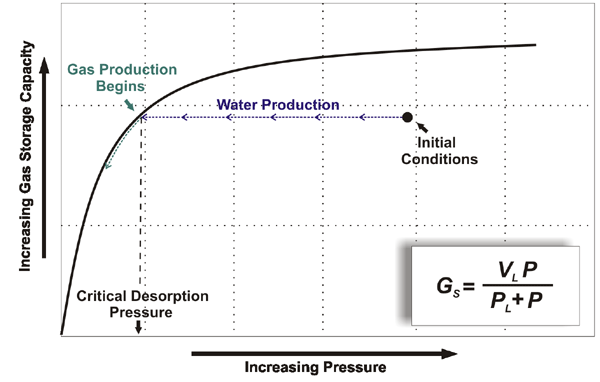List of Model Input Variables
The following list of variables were needed as input for running CMG's GEM Reservoir Simulator. The GEM Simulator is a multi-component, multi-phase reservoir simulator that utilizes Equations of State (EOS) formulations. The software has numerous built-in features to account for many complex interactions that take place in a CBNG reservoir and ECBNG recovery.
Basic Reservoir Model Variables
Permeability I, J, K (Fracture) Fracture Spacing (I, J, K) Rock Compressibility Reference Pressure Sw (matrix, fracture) Well Location Perforations Well Constraints |
CBNG Model VariablesDefine Components Water Viscosity Reference Pressure for Water Density Initial Reservoir Pressure Reservoir Temperature Max Gas Content Langmuir Pressure Initial Gas Content Coal Desorption Time Coal Diffusion Coefficent Initial Gas Composition Palmer and Mansoori Model VariablesYoung's Modulus Poisson's Ratio Strain at Infinite Pressure Palmer and Mansoori Exponent |
|---|
Langmuir Isotherm
Gas storage capacity of a coal can be expressed by the above equation - a function of its Pressure (P), Langmuir volume constant (VL), and Langmuir pressure constant (PL). The maximum amount of sorbed gas in a coal is represented by the Langmuir volume constant. The Langmuir pressure constant is the pressure at which gas storage capacity equals half of the Langmuir volume constant. The (VL) and (PL) dictate the shape of the isotherm, which can be used to predict the amount of gas released as reservoir pressure is reduced.

http://www.kgs.ku.edu/PRS/publication/2006/2006-13/p3-02.html
Last Modified May 2006